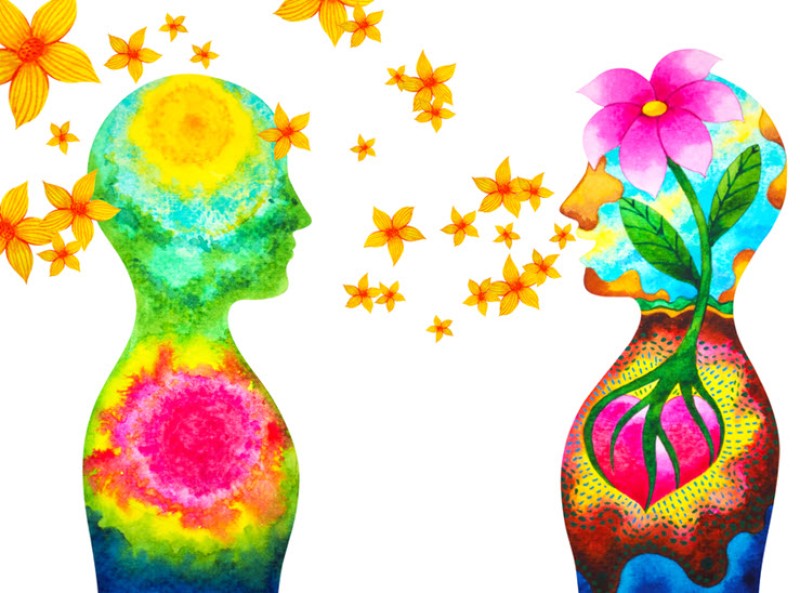
Cannabis Vernacular - How do we change the way we talk about cannabis?
In the world of cannabis, there are two terms that have become deeply ingrained in our vernacular: Sativa and Indica. These words have permeated dispensaries, online strain databases, and stoner conversations for years. We've all heard them, and we've all used them to classify and describe the effects of different strains. Sativas are believed to deliver energetic and uplifting highs, while Indicas are associated with relaxation and a more sedating experience. It's a simple and convenient way to categorize cannabis, or so we thought.
But here's the twist: these classifications, as widely accepted as they are, are not accurate. Yes, you heard it right. The traditional notion that Sativas provide heady, euphoric highs and Indicas induce body-heavy, narcotic-like effects is actually flawed.
So why is this popular belief misguided? Well, the truth is that the effects of cannabis are not solely determined by the plant's genetic categorization as Sativa or Indica. The chemical makeup of the plant, including its cannabinoids, terpenes, and other compounds, play a significant role in the overall experience. The Sativa/Indica classification fails to capture this complexity and oversimplifies the diverse effects that different strains can offer.
While it's tempting to seek substitutes for these terms, the challenge lies in finding a practical and universally understood language that accurately represents the effects of various strains. The cannabis industry needs a standardized vocabulary to guide consumers in their choices. However, this should go beyond the limited Sativa/Indica framework and embrace a more comprehensive approach that incorporates the specific chemical profiles and individual experiences associated with each strain.
In the following sections, we will delve deeper into the complexities of cannabis and explore why the Sativa/Indica classification falls short. We will also discuss the importance of a nuanced and scientifically informed language to describe cannabis strains accurately. It's time to move beyond the oversimplified terminology and embrace a more sophisticated understanding of cannabis effects. So, buckle up, dear readers, as we embark on a journey to reshape the way we talk about cannabis.
What inspired me to write this article?
The other day I was scrolling on Twitter when I saw this tweet by Chris Becker,
“Indica” and “sativa” are made up terms that don’t mean anything.
But consumers use them as shorthand for how a product will make them feel.
Want to change the way consumers shop?
Need a better shorthand, not a graduate course in terpene science.
Now, it’s important to point out that Indica and Sativa aren’t made up terms. Chris quickly got a response from other people pointing this out;
Lol. Uhhh, Chris.
Indica and sativa are not made up terms, and they definitely have meaning. Especially amongst breeders.
They are botanical terms, used to refer to the plants physical structure and a classification for the psychoactive effect the cannabinoids/terps have. - @TacketGenetics (Twitter)
While this is correct, other people did point out that the terms for consumers are largely meaningless as demonstrated by this tweet;
Plant morphology doesn't guarantee a specific cannabinoid or terpene profile. I can use a specific light spectrum to force a "sativa" to be short/bushy, does that make it an indica? Indica and sativa have nearly no relevance as most cultivars are hybrids due to so much breeding - @masterdegen_eth (Twitter)
And this is exactly what we’re talking about in this article. The fact of the matter is that Indica and Sativa doesn’t guarantee a specific effect and most budtenders will use those words to describe a “general feeling”, but doesn’t actually give you an accurate description.
It would be like buying alcohol wanting to get the “tequila effect” but alcohol is only divided into “strong alcohol” or “weak alcohol”. Yet these classifications wouldn’t account for the nuance in the preparation and source material of creating the specific alcoholic beverage.
Therefore, in order for cannabis to evolve beyond the limitations of its vernacular, we will attempt to create some new classifications. Of course, this is just me spitballing and we would need to reach some general consensus in the industry, but someone’s got to get the ball rolling so why not me?
The History of Cannabis Sativa and Cannabis Indica
Cannabis sativa and cannabis indica, the two main species of the cannabis plant, have a rich and intriguing history that spans thousands of years. These terms originated from the early taxonomic classifications and were later adopted by the masses as a way to describe the effects of cannabis.
Cannabis sativa is believed to have originated in regions near the equator, such as Central Asia and the Indian subcontinent. It is a tall, slender plant with narrow leaves and tends to thrive in warmer climates. Cannabis indica, on the other hand, is thought to have originated in the mountainous regions of Afghanistan, Pakistan, and surrounding areas. It is a shorter, bushier plant with broader leaves, well-suited for colder climates.
Historically, cannabis has been cultivated for various purposes, including fiber production, medicinal use, and spiritual rituals. As cannabis spread across different cultures, people began to notice variations in the effects produced by different plants. This led to the development of regional naming conventions, such as "sativa" and "indica," to distinguish between the different types of cannabis.
In the 18th and 19th centuries, European botanists and explorers encountered cannabis during their travels, and they started to classify the plant based on physical characteristics and geographical origins. Jean-Baptiste Lamarck, a French biologist, is often credited with introducing the terms "sativa" and "indica" in his botanical writings in the early 19th century.
Over time, these terms became more widely known and adopted by the cannabis community. As cannabis gained popularity for its recreational and medicinal properties, people began associating certain effects with Sativa and Indica strains. Sativas were described as providing uplifting, cerebral effects, while Indicas were associated with relaxation and sedation.
However, as I have mentioned, it's important to note that the effects of cannabis are not solely determined by its classification as Sativa or Indica.
The chemical composition of the plant, including cannabinoids, terpenes, and other compounds, plays a crucial role in shaping the effects.
This complexity challenges the oversimplified Sativa/Indica dichotomy and highlights the need for a more nuanced understanding of cannabis strains.
What specifically impacts the effect of a strain?
Cannabinoids, such as THC (tetrahydrocannabinol) and CBD (cannabidiol), are the most well-known compounds in cannabis. THC is primarily responsible for the psychoactive effects, while CBD has been associated with potential therapeutic benefits. However, there are over a hundred different cannabinoids in the plant, each with its own unique properties and effects. The combination and ratio of cannabinoids in a particular strain can greatly influence its overall effect on the consumer.
Terpenes, aromatic compounds found in cannabis and other plants, also play a significant role. These compounds contribute to the distinct flavors and smells of different strains, but they are not just about sensory experience. Terpenes can interact with cannabinoids and other compounds, modulating the overall effect. For example, the terpene myrcene is believed to promote relaxation, while limonene may offer mood-enhancing qualities.
The entourage effect further emphasizes the importance of the combined presence of cannabinoids, terpenes, and other compounds. This concept suggests that these components work synergistically, enhancing or modifying each other's effects. The presence of specific cannabinoids and terpenes, along with their respective ratios, can create unique combinations of effects.
Additionally, factors like dosage, consumption method, and individual physiology can also influence the experience. Two people consuming the same strain may have different reactions due to variations in their body chemistry, tolerance, and mindset.
Understanding the intricacies of these elements is crucial for both consumers and the industry. It allows for more accurate and comprehensive product descriptions, helping consumers make informed choices based on their desired effects. It also opens up opportunities for personalized cannabis experiences tailored to individual preferences and needs.
As the cannabis industry continues to evolve, recognizing the multifaceted nature of cannabis effects and embracing a more holistic approach to strain categorization can lead to a more nuanced and accurate understanding of the plant's potential benefits and effects.
Treat it like wine?
While some individuals advocate for labeling cannabis in a manner similar to wine, focusing on taste, aroma, and other sensory attributes, it's important to recognize that such descriptors primarily capture the sensory experience rather than the effects of cannabis. While taste and aroma can certainly enhance the overall enjoyment of cannabis, they don't provide a comprehensive understanding of the desired effect that consumers seek.
Unlike wine, where the tasting experience is central to its appreciation, the effects of cannabis play a pivotal role in consumer preferences. Cannabis users often seek specific outcomes, such as relaxation, creativity, focus, or pain relief, rather than solely prioritizing taste or aroma.
When it comes to cannabis, the chemical composition and the resulting effects are more influential than sensory characteristics alone. Cannabinoid profiles, including THC, CBD, and other compounds, along with the presence of specific terpenes, determine the psychoactive and therapeutic effects of a strain. These factors have a direct impact on consumer experiences, making them a crucial consideration.
While taste and aroma can add to the overall enjoyment of consuming cannabis, most users prioritize understanding the potential effects of a strain. They want to know whether it will provide relaxation or energy, enhance creativity, induce sleep, or offer relief from specific symptoms or conditions.
Efforts to label cannabis based solely on sensory attributes may overlook the vital information that consumers seek. A more comprehensive approach is needed, one that incorporates both the sensory experience and the desired effects. This could involve developing a standardized system that combines sensory descriptors with information about cannabinoid and terpene profiles, allowing consumers to make informed decisions based on both taste/aroma preferences and desired effects.
Just Describe the effect?

In an effort to provide consumers with a better understanding of the effects of cannabis, some places have adopted tags like "Happy, Energetic, Calm, Relaxed" to describe the desired outcomes. These descriptive words attempt to capture the overall effect a strain may have on an individual, offering a more nuanced understanding beyond the traditional indica vs. sativa categorization. However, it is important to recognize that these words are subjective and can vary from strain to strain, and even from one dispensary to another.
The experience of feeling "happy" or "energetic" can differ significantly based on an individual's unique physiology, tolerance, and personal preferences. What may induce relaxation for one person might result in a more stimulating effect for another. Additionally, the same strain grown in different environments or under different cultivation practices may exhibit variations in its effects. This highlights the challenge of creating a universal vernacular for the cannabis industry.
To establish a common language for describing cannabis effects, it would be beneficial to consider a more comprehensive approach. This could involve incorporating standardized measurements of cannabinoids and terpenes, along with consumer feedback and experiences, to develop a more accurate and reliable framework. Additionally, leveraging scientific research and clinical trials can provide valuable insights into the potential effects of specific chemical profiles.
Collaboration within the cannabis industry is crucial in order to establish a shared understanding of the effects and to create a consistent language that consumers can rely on. This could involve the development of industry-wide guidelines, certifications, or labeling systems that go beyond simple subjective descriptors. By combining scientific knowledge, consumer feedback, and industry expertise, a more standardized and informative approach can be achieved.
The goal should be to provide consumers with transparent and reliable information about the effects of cannabis products. By moving beyond the limited dichotomy of indica vs. sativa and exploring a more nuanced and comprehensive language, the industry can empower consumers to make informed choices based on their desired experiences.
What are your thoughts?
While I don’t have a clue on how to breath this problem, I decided to ask our pals “Artificial Intelligence” to come up with a solution. I basically showed it this article you’re reading and asked it to come up with something….this is what it said;
Introducing the Cannabis Effect Spectrum™: A standardized classification system that takes into account the diverse elements that contribute to the effects of cannabis. This innovative approach aims to provide consumers with a more comprehensive understanding of the potential experiences associated with different strains.
The Cannabis Effect Spectrum™ categorizes cannabis products based on a combination of key factors: cannabinoids, terpenes, and consumer-reported experiences. By considering these elements, we can create a standardized framework that captures the nuanced effects of each strain.
To implement the Cannabis Effect Spectrum™, strains would be evaluated based on their cannabinoid profiles, including the presence and ratio of THC, CBD, and other cannabinoids. This information would be complemented by an analysis of the strain's dominant terpenes, which contribute to its aroma and may also influence its effects.
Additionally, consumer feedback and experiences would play a crucial role in this classification system. Users would be encouraged to provide subjective feedback on the effects they experienced, allowing for a broader understanding of how different individuals perceive and respond to specific strains.
Using the Cannabis Effect Spectrum™, strains would be placed along a visual spectrum that represents a range of potential effects. Instead of relying on simple descriptors, the spectrum would provide a more nuanced and standardized approach to classifying cannabis. This would enable consumers to make more informed choices based on their desired experiences, whether they seek relaxation, creativity, focus, or other desired effects.
To support the implementation of the Cannabis Effect Spectrum™, industry-wide collaboration and adherence to standardized testing and reporting practices would be essential. This would ensure consistency and accuracy across dispensaries and brands, allowing consumers to rely on the classification system regardless of where they purchase their cannabis products. - ChatGPT
The Sticky Bottomline
There will come a point in time when we will be forced to expand our vernacular. We’ll need to escape the dichotomy of Sativa/Indica, especially as we enter into the realm of beverages and edibles.
What this will look like, who knows? One thing is certain, future consumers will think that Sativa and Indica classifications to be archaic in nature.
What’s your take on it?







